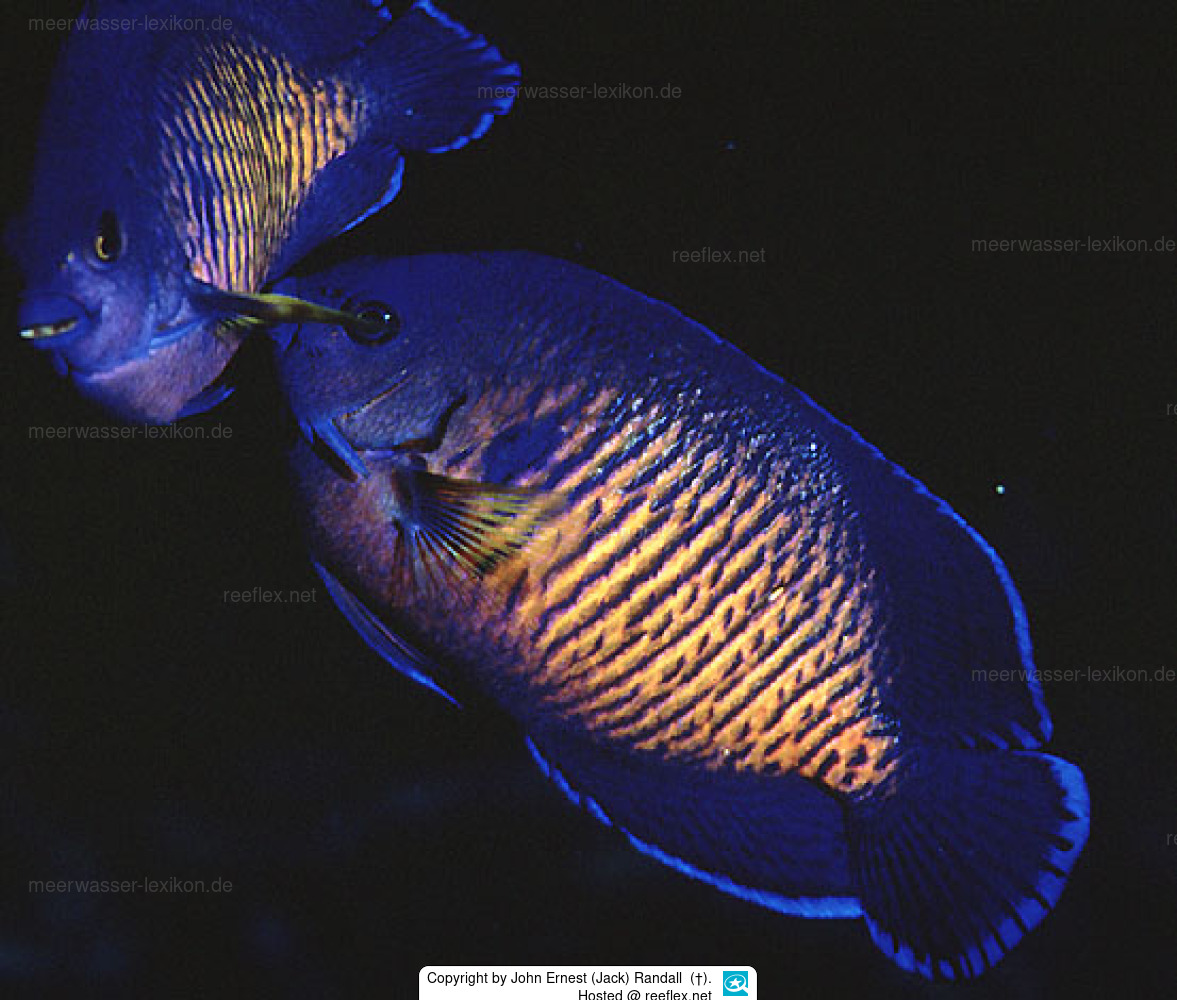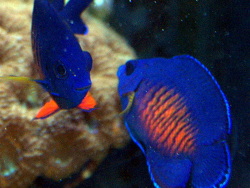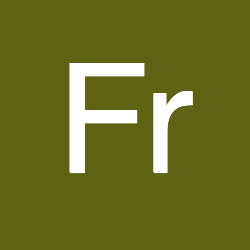Info
Centropyge bispinosa (Günther, 1860)
The Coral Beauty Angelfish is very common on the Great Barrier Reef, is also known as the Twospined or Dusky Angelfish. The body and head are a deep royal blue, highlighted with an iridescent orange to yellow. It is often confused with the Centropyge multispinis, also called Bluefin Angelfish.
It requires a tank with lots of hiding places and live rock for grazing. Not a good reef dweller, the Coral Beauty Angelfish is prone to nip at stony and soft corals (sessile invertebrates). The diet of the Coral Beauty Angelfish should consist of marine algae, like all Centropyge consume the Coral Beauty a considerable amount of microalgae and detritus, therefore it pays to not be too meticulous in keeping their system to clean. The Coral Beauty eats also like other Dwarf Angels, high-quality angelfish preparations, mysid or frozen shrimp, and other quality meaty foods. Like all angelfish, the Coral Beautys are constant and voracious feeders. They will sample anything and everything placed within the tank, including corals. Caution should be used when considering placing an angel
Dwarf angels are known prey items for many larger reef fishes. Which explains their inquisitive and alert behaviour. Placing these fish with larger predatory species should be avoided (ie: Groupers/Bass, Lionfish, Triggers). Dwarf angels do not adjust well to aggressive tankmates.
Synonymised names
Centropyge bispinosus (Günther, 1860) · unaccepted
Centropyge hispinosus (Günther, 1860) · unaccepted (misspelling)
Holacanthus bispinosus Günther, 1860 · unaccepted
am 22.08.25#20
Ich halte inzwischen seit ca 2 Jahren zwei dieser Fische, am Anfang gab es Rauferei für eine Woche, weil beide bei Einsetzen gleich groß waren, dann kam aber ein dauerhafter Frieden und seitdem vertragen sie sich gut, wenn sie offensichtlich aber kein Paar bilden. Beide Zwergkaiser sind etwa 6 cm groß un wachsen offenbar sehr langsam, weil ich nur wenig zufüttere. Hauptsächlich ernähren sie sich von dem was das Aquarium hergibt und es ist ein relativ kleiner Becken von 250 Liter Größe in dem auch zwei Recht große Einsiedler und zwei Pyjama Barsche leben. Trotzdem lassen sie die Korallen in Ruhe, darunter mehrere Montipora, Euphyllia und Weichkorallen, die wie helle Kenia Bäumchen aussehen, sind aber wohl keine, ich kenne den Namen nicht.
am 29.12.18#21
Ich pflege 2 dieser schönen Fische.
Ich kann nicht nachvollziehen warum 500l als Mindestgrösse empfohlen wird.
Ich denke es kommt vielmehr auf die Beckeneinrichtung und auf die Vergesellschaftung an.
Ob die Tiere in 200, 500 oder 1000l schwimmen ist dabei doch nachrangig.
Ich kann sie auch für kleinere Becken empfehlen da sie wenig aggressiv untereinander und auch sehr friedlich zu allen anderen Fischen sind. Sie vergreifen sich auch nicht an Korallen oder anderen niederen Tieren.
am 04.05.18#20
Hallo zusammen, pflege seit 6-7 Monaten auch einen. Herlicher Fisch kann Ihn nur empfelhen! Geht nicht bei mir an Korallen. Haben Steinkorallen und LPS.
Nur wurde der bicolor goby paar Tage attackiert doch jetzt herscht Ruhe!
Vor 2 Tagen habe ich zwei Fire Goby's eingesetzt doch leider werden diese wieder von dem Zwerkkaiser attackiert. Die Tiere können kaum schwimmen und verstecken sich immmer!
Ich hoffe das diese nicht sterben bevor Ruhe herscht. Mal sehen das klappt!







 Dr. John Ernest (Jack) Randall (†), Hawaii
Dr. John Ernest (Jack) Randall (†), Hawaii


































































